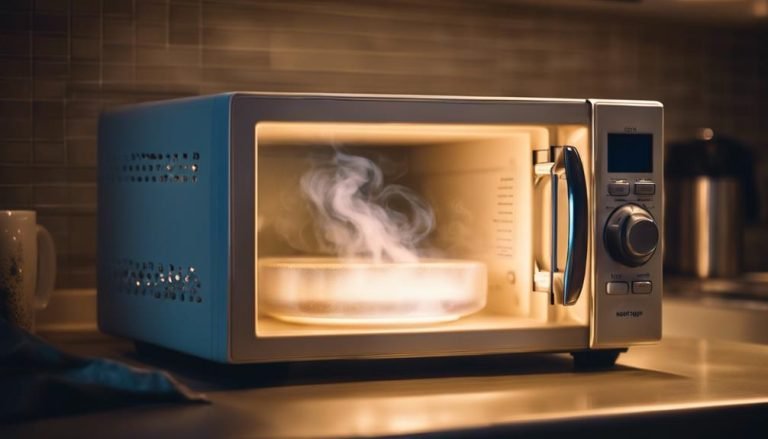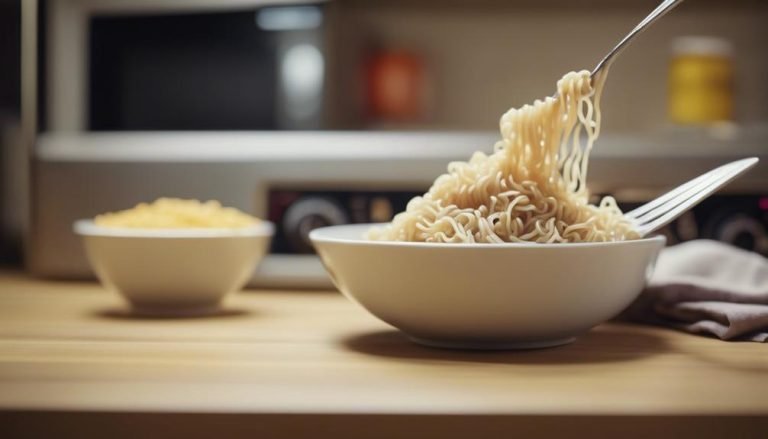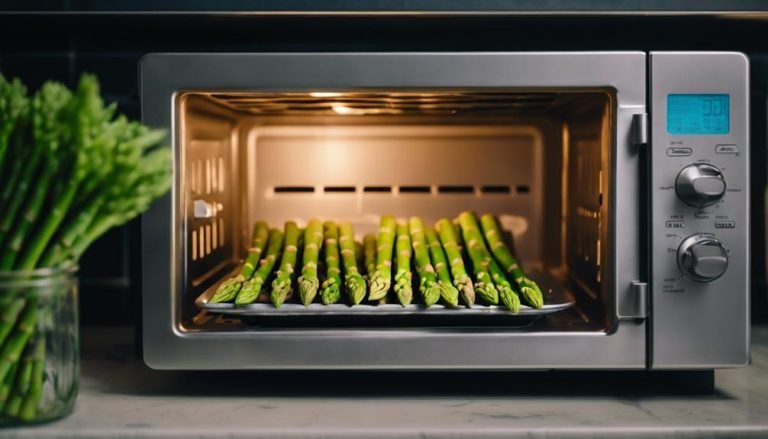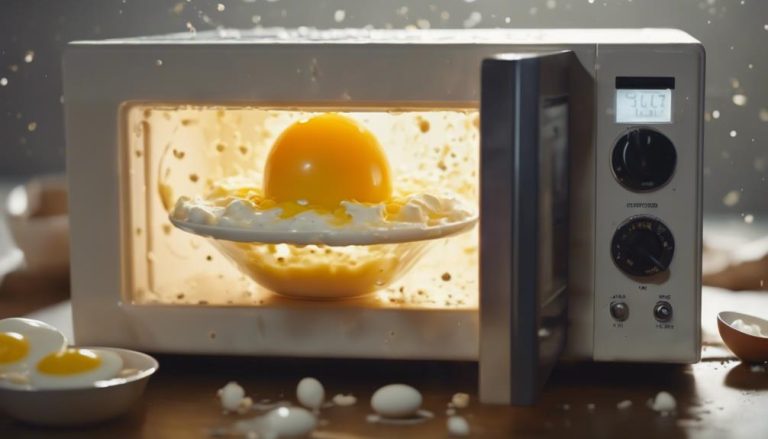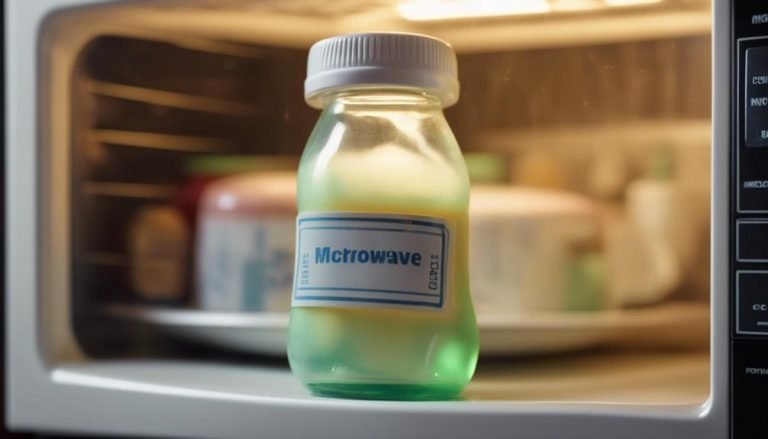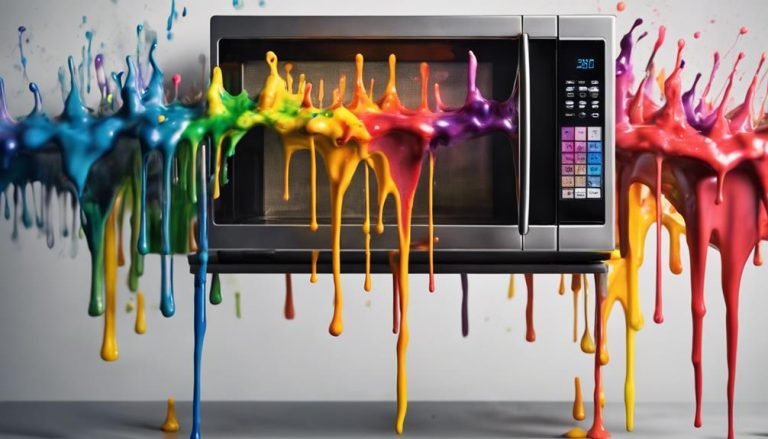Can You Microwave a Red Solo Cup
No, it is not safe to microwave a red Solo cup. The material composition of these cups can lead to melting or warping when exposed to microwave heat.
This can result in the release of harmful chemicals into your food or beverage.
It is important to use microwave-safe containers to avoid any potential risks to your health.
Key Takeaways
- Red Solo cups should not be microwaved due to low heat tolerance and the release of harmful chemicals.
- Microwaving Solo cups can lead to deformation, toxic emissions, and health hazards.
- Opt for microwave-safe materials like glass or ceramic cups to prevent health risks.
- Using non-microwave-safe plastic cups like Red Solo cups can have detrimental health and environmental effects.
Solo Cup Material Composition
Solo cup material composition is primarily based on thermoplastic polystyrene, a substance known for its low heat tolerance and potential health risks associated with chemicals like BPA.
While red Solo cups are a popular choice for parties and events, it's essential to be aware of their limitations. Polystyrene, the main component of Solo cups, is not microwave-safe and can deform or release harmful chemicals when exposed to high temperatures.
The presence of BPA in plastic materials raises concerns about the safety of using Solo cups, especially when heated. To ensure the safe use of red Solo cups, it is advisable to avoid microwaving them and storing them away from heat sources to prevent any potential health risks associated with harmful chemicals.
Microwaving Red Solo Cups
Given the material composition of red Solo cups primarily consisting of thermoplastic polystyrene, it is crucial to understand the potential hazards associated with microwaving these containers.
Red Solo cups are not microwave safe as they can melt when exposed to heat, releasing harmful chemicals such as BPA and phthalates. These plastic cups are not designed to withstand the high temperatures of a microwave, with a melting point around 170°C.
Unlike FDA-approved BPA-free plastics deemed safe for microwave use, Solo cups do not fall into this category. Therefore, it is advisable to refrain from microwaving Red Solo cups to avoid health risks linked to the emission of toxic substances.
Safety Considerations for Microwaving
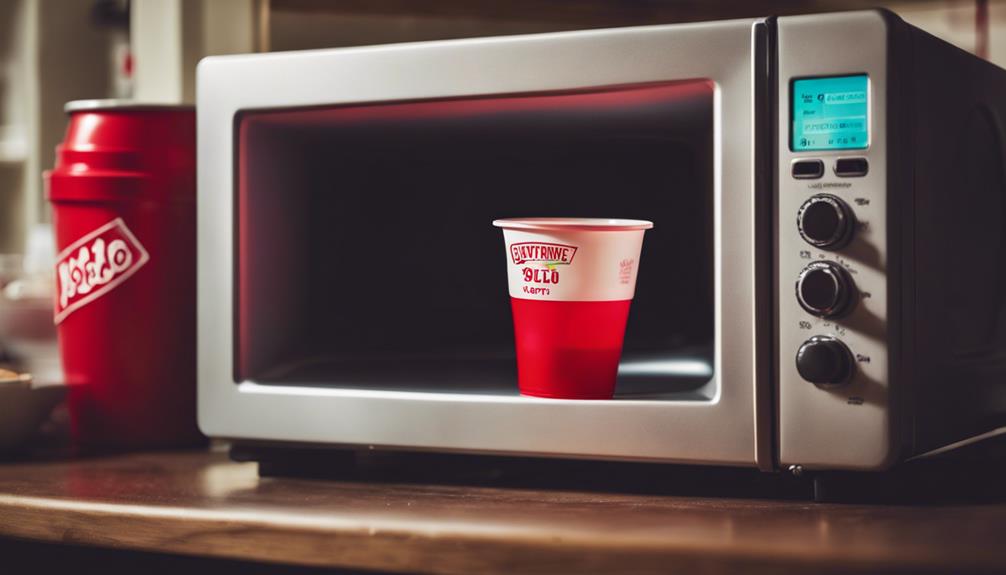
When microwaving items, it is essential to consider safety considerations to prevent potential hazards.
Safety Considerations for Microwaving:
- Material Matters: Red Solo cups are made of polystyrene, which has low heat resistance and can release harmful chemicals like BPA and phthalates when microwaved.
- Melting Point: The melting point of red Solo cups is around 170°C, making them unsuitable for microwave use as they can deform and release toxins.
- Health Risks: Microwaving red Solo cups can pose health risks due to the potential release of harmful chemicals, so it is advisable to avoid using them in the microwave to safeguard against such dangers.
Alternatives for Microwave Heating
Glass and ceramic cups are recommended as safe alternatives for microwaving, providing a reliable option for heating food or beverages without the risks associated with materials like polystyrene. These cups are made to withstand high temperatures, unlike some disposable cups made of plastic that may release harmful chemicals when heated.
It is essential to avoid microwaving plastic containers not labeled as microwave-safe to prevent health concerns. Opting for glass or ceramic cups ensures a safer approach to microwave heating and reduces the potential risks associated with plastics.
Environmental Impact of Red Solo Cups

Amidst the discussion on safe alternatives for microwave heating, the environmental impact of Red Solo cups presents a concerning aspect of their widespread use. These cups, often bought in bulk quantities for events due to their cost-effectiveness, are made from non-biodegradable plastics, contributing to plastic pollution and landfill waste.
While their hygienic single-use advantage is undeniable, proper disposal is crucial to mitigate their environmental impact. Recycling red Solo cups poses challenges, primarily because of their distinctive red color, which hampers the recycling process.
As individuals and industries alike grapple with the consequences of single-use plastics, finding sustainable solutions for the disposal and potential recycling of items like Red Solo cups is imperative for reducing environmental harm.
Frequently Asked Questions
Can You Reuse a Red Solo Cup After Microwaving It Once?
Reusing a red Solo cup after microwaving is discouraged due to safety concerns. The structural integrity, heat resistance, and potential release of harmful chemicals make it unsuitable for further use. Consider alternative, dishwasher-safe, and eco-friendly options.
Are There Any Health Risks Associated With Microwaving a Red Solo Cup?
There are health concerns associated with microwaving red Solo cups due to potential chemical release when heated. To mitigate risks, consider eco-friendly solo cup alternatives, adhere to plastic safety guidelines, and explore durable food container options.
How Long Can a Red Solo Cup Be Microwaved for Before It Becomes Unsafe?
Heating plastics in microwaves poses microwave safety risks due to potential plastic dangers, including plastic toxins release. Using microwavable materials for safe reheating is advised to avoid Solo cup risks and ensure proper plastic disposal to maintain heating limits.
Can You Microwave a Red Solo Cup if It Has a Design or Label on It?
When considering microwaving a red Solo cup with a design or label, prioritize safety by opting for microwave-safe materials, considering heat resistance, and exploring Solo cup alternatives like reusable, eco-friendly options. Remove labels if unsure and focus on reducing waste through recycling choices.
Are There Any Special Precautions to Take When Microwaving a Red Solo Cup, Such as Using a Microwave-Safe Cover?
When considering microwave safety, it's crucial to choose appropriate food containers. Plastic materials like red Solo cups are not microwave-safe, posing risks of deformation, leaks, and fires. Opt for microwave-safe glass or ceramic tableware to prevent accidents.
Conclusion
In conclusion, microwaving a red Solo cup is not recommended due to safety concerns associated with the material composition of polystyrene cups. It is important to prioritize safety when using microwave ovens to prevent potential hazards such as melting, chemical emissions, and fires.
To avoid these risks, opt for microwave-safe containers for heating food and beverages. Remember, it's better to be safe than sorry when it comes to using red Solo cups in the microwave.

